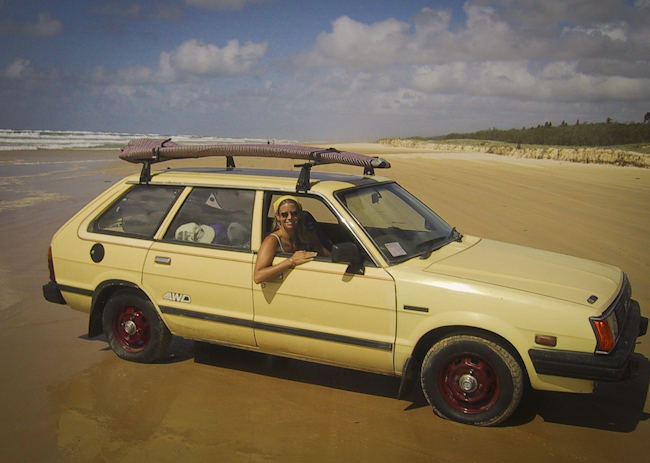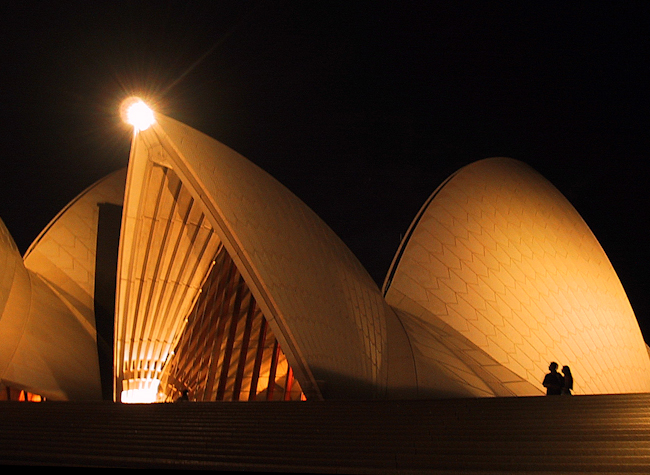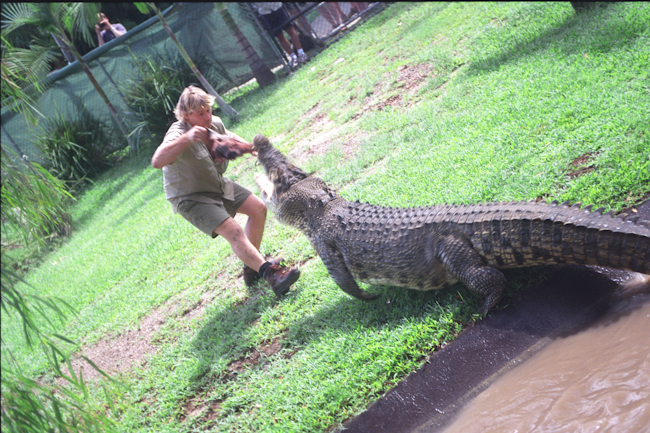Subie, Sand, Sun, Surfing, & Sipping
Enjoying Australia’s most popular pastimes: (story by Dale Johnson)
FOR SALE: 1983 Subaru 4 WD Wagon, 4 speed manual, good condition, road worthy certificate, registration ’til Jan 2002, new tyres. $2,050.00 Aus
Our plan was simple enough. Fly into Melbourne, find a place to stay, and search the local newspapers for a cheap dependable used car to provide transport for our three month Aussie encounter. We found a St. Kilda guesthouse in a trendy neighborhood mixed with cool outside cafes, hip bars, seedy characters, ‘working girls’, Ferraris, Harleys, drag queens and travelers. After cruising through the classified ads, circling a few prospects, and calling for more details, we narrowed down our choices…only two cars that matched what we wanted.
In a borrowed Toyota Corolla, we plotted a course to see our first choice (ad above). The owner, who sounded like a grumpy old man on the phone, turned out to be a friendly guy with the posture of the hunchback of Notre Dame. Pale yellow, sun-bleached inside and out, rust spotted and slightly dented, 232,000 + miles – we couldn’t believe this was our first choice. The Subaru seemed to run ok, but with our ‘vast’ knowledge of automobile mechanics, what do we know? Test-driving revealed it could rattle its way down the road and stop when needed, everything else seemed to work.
As the sweat poured from our bodies in the record 105°F heat, our offer of $2,050 Aussie dollars was conditionally accepted…the old man had already promised somebody else the first shot. Luckily the other couple declined (she wanted a red car), so we counted out our cash, completed the paperwork, and shook hands – the deal was done. Andrea’s perfect name for this car, “Sunshine” stuck as instantly as we did to the vinyl seats. With its red wheels and overall appearance our Subie made a statement – we’re travelers ready to explore Australia!
Cruising the Australian coast without a surfboard on your car is like riding a Harley without black leather – it just didn’t feel right. Adding to the ‘coolness’ factor of Sunshine, we decided to buy our own board. In the parking lot f the surf museum, coincidentally we met Bruce, a 40-ish, long gray haired, tan surfer who owns a local surf shop nearby. Now with our ‘connection’ in the surf community we were on the fast track to acquire everything we needed to transform from mere travelers into “Surfies”. We chose a board that was 7’6″ long, based on a few factors; it was an easy length to learn on, catch waves, and most importantly it fit inside our Subie when we needed to lock it up. Surfing seems simple enough – just paddle out, catch a wave, stand up, ride the curl, and repeat…yeah, right! If you’re ever curious what it would feel like inside your washing machine on spin cycle, try surfing! Each attempt taught me something important, and when I paid attention I soon stood to surf more and got washed less.
A clunk, clunk, clunk noise emanating from Sunshine’s front end didn’t sound good. Undoubtedly a trip to a mechanic doesn’t bring about positive feelings. Luckily we were able to find someone to look at it right away. The good news – the noise was just a loose axle nut; the bad news – we needed new brakes and a ball joint. An hour and a couple of hundred Aussie dollars later we were rattling down the Great Ocean Road again in search of the perfect learner’s wave. The twisty road snaked down the coast for a couple hundred miles, offering beautiful views of beach – perfect for our search. Unfortunately strong on-shore winds flattened the waves so surfing wasn’t good. However, our search did produce plenty of “you should have been here yesterday or last week” stories.
Continuing west the beaches disappear far below as the sandstone cliffs rose higher. Erosion has sculpted the coastline into fantastic forms and after dozens of photo stops we became tired, settling for just slowing down for a quick look from the car. Heading inland we now passed through farmland, bush, and forest, and curious attractions – a giant banana and lobster sculpture big as a bus, cheese world, cow world, and sheep world – everything was designed to capture the driver’s attention quickly and most importantly their tourist dollars. However, our next stop was Adelaide.
Adelaide is a city designed with forethought; it’s completely surrounded by a nature park, has streets that are organized into easy to navigate grid patterns, and it’s center is designated as a pedestrian-only town square. By camping just outside Adelaide at a caravan park on the beach we could venture into the city to enjoy great dinners, the movie Castaway, Aboriginal art, and exceptional shopping, which Andrea craved (there were still no good waves for surfing). More temptations are just an hour or so outside Adelaide – here lies the Barossa Valley, one of Australia’s premier wine regions.. Andrea’s passion for wine tasting can only be rivaled by her lust for chocolate! With map in hand, we systematically sampled the fantastic wines and started building our collection to enjoy later at B.Y.O. restaurants, campsites, or on our Whitsunday sailing trip.
Now it was time to head back to the east, traveling inland towards the Murray Valley region for our first taste of small town, semi-outback rural Australia. Leaving the coast meant that surfing was temporarily put on hold, and seeing only waves of sand and dirt made me cranky until I reminded myself “I’m on holiday, snap out of it”!
The Snowy Mountains, made famous by the movie The Man from Snowy River, is Australia’s only Alpine region. We had received a hot tip on a great campsite nestled in the foreground of the mountains. Our guidebook said kangaroos frequented the grassy meadows near our camp…for once the guidebook was right. After almost a month in Australia we had yet to see a kangaroo (road-kill doesn’t count). In the morning Andrea headed to the bathroom and was surprised by large herds of kangaroos grazing in the nearby grassland. Rushing back to camp to grab her cameras, she hoped they hadn’t disappeared. For the next two hours Andrea had a ‘kangaroo experience’. She sat amongst them taking photos, smiling as they hopped around, watching the baby ‘roos poke their shy heads into their mother’s pouches, and relaxing in the shade. After breaking camp and loading the car I had to drag Andrea away from her new friends.
At our next stop we arrived in Sydney at a friend’s doorstep & grasped the opportunity to put our nomadic life on hold. Andrea, always happy to meet up with friends, had contacted Stefan Long (another high school classmate) and arranged for us to stay for a ‘few days’. Stefan had just moved to Sydney with his girlfriend Michelle, and leased a flat in the hip Darlinghurst neighborhood. Since they had also been long time travelers they understood the importance of a place to call home and welcomed us in. Settling down, we did a little sightseeing, but mostly spend our time relaxing and surfing. Our bad influence on Stefan didn’t help his job search since we convinced him to try surfing on Bondi and Manly beaches.
One of the reasons we timed our visit to Sydney at the end of February was to experience it’s famous Mardi Gras Parade. The city was overflowing with spectators and parade participants; though Sydney’s Mardi Gras is a celebration of the Gay & Lesbian community, the parade was a wild mix of just about everything imaginable.
Australia’s most famous landmark, Sydney’s Opera House is an absolute must see. Some people say it’s modeled after shells while others say its sails. Regardless of the design’s origins the building is spectacular. Last minute standing room tickets for a play in one of the satellite theaters is an inexpensive way to experience the nighttime ambiance. We saw the final full run rehearsal of a Williamson comedy, “For the Love of Art”. The play was a hilarious, well-written and acted jab about how low an art dealer would stoop to sell a painting. Two and a half-hours later, with tired feet, we exited the theater still laughing. Afterwards, with the lights reflecting across the harbor we people watched and enjoyed the view before walking home.
Learning to play (or just trying) the didgeridoo is another quintessential Australia experience. Thousands of years ago Aborigines played a hollowed out wooden instrument by blowing through it, which allowed the sounds to reverberate inside and created a unique musical tone. Today this ancient instrument can be bought just about anywhere in Australia, and is one of the most popular tourist purchases (most end up collecting dust in a corner never to be played). Our hunt for an authentic, musical quality, traditionally decorated didgeridoo educated us about the nature and importance of the didgeridoo in the Aboriginal culture.
A true didgeridoo begins as a gum tree branch hollowed out by termites, and is then refined by hand into an instrument. They are used for ceremonies, story telling, song and dance. Aborigines say that extended play moves the inner spirit to another level (something only revealed to those who experience it’s magic). We enjoyed the sound and agreed that I should learn to play the one we eventually would purchase. Choosing a quality didgeridoo isn’t easy since very few actually produce true reverberating sound (which is difficult to determine when you can’t play one!). Usually the salespeople at the shops could play the didgeridoo, which allowed us to hear the instrument’s tone and reverberation. Our search ended in Sydney when we found ‘the one’ at a friendly shop in the Rocks district. Included with our purchase was a free two-hour lesson.
Saturday morning at 10 a.m., after a rainy 45-minute walk we arrived for our lesson. The first thing we had to learn was to not take ourselves too seriously – our instructor told us to just relax, laugh, and enjoy the learning experience. Most people make a sound somewhere between a foghorn and cow wailing on their first attempt. Getting the proper sound came quickly for me and I focused my efforts on producing different sound variations for the remainder of the class. The hardest part of the lesson was circular breathing. Trying to breathe out of my mouth while at the same time inhaling through my nose was no easy task. However if I learned this skill I would be able to play continuously without the breath hesitation or passing out due to lack of oxygen. Two hours passed quickly, and I spent another couple hours practicing while getting more tips for improvement. The final encouragement from our instructor was to have a few beers and think like a child. He was right the beers did help! With our didgeridoo sitting at home along with a couple of CD’s for musical reference, I look forward to practicing and the many beers I’ll need before my first concert.
After enjoying ten days at Stefan’s flat, we reluctantly left Sydney and began our drive north up the coast. Our arrival at Byron Bay coincided with the area’s largest rainfall in 30 years. Eleven inches of rain fell in three hours. Our wipers couldn’t clear the water fast enough, and our subie’s defogger was useless in the extreme hot, humid weather. At one point we saw cars floating down a side road next to our freeway! Driving from Surfer’s Paradise to Brisbane normally takes an hour, but during this storm it took us four hours to drive this distance. The waves at these popular surf destinations were mammoth – not even the professional surfers were crazy enough to attempt surfing. Luckily for us, nearby was a different but equally adventurous diversion.
Steve Irwin, aka the Croc Hunter , is world famous for his television show regularly broadcast on the Discovery channel, “The Crocodile Hunter”. His obsession with saving, capturing, and caring for these wild creatures is only surpassed by his exuberant energy. We visited the Australian Zoo hopeful for a chance to see Steve in action. Good fortunes shined on us and the Croc Hunter appeared for the 1 p.m. crocodile feeding show. Our opportunity to see him was due to the fact that he was giving a V.I.P. tour to professional surfers in town for the quicksilver surfing competition.
Today’s show featured a fifteen-foot salt-water crocodile that Steve referred to as a “sneaky little devil”. With raw meat dangling from his hand, he readied himself for the ambush style assault commonly used by salties. Under the murky brown water of it’s pond the crocodile was virtually invisible until it exploded from the water – a truly amazing spectacle. As the show ended and the group moved on, we grabbed the opportunity to blend into the V.I.P tour and tag along for more of the Croc Hunter ‘s wild demonstrations. The zoo also housed dingos, kangaroos, wallabies, birds of prey, Australia’s most venomous snakes and largest pythons. After our zoo visit with the Croc Hunter I can definitely say that guy is exactly like he appears on T.V. – crazy as ever!
PHOTO: Fraser island collage
Buried in sand up to the axles and racing to beat the incoming tide, we strained to quickly to pull our Subie free with the help of friendly Aussies. Fraser Island is the world’s largest sand island, and with its abundance of fresh, sand filtered water, the island has developed into a lush forest. Access to Fraser Island is 4WD only and many coastal routes can only be negotiated at low tide. Driving in soft sand takes practice – the car tends to sway from side to side and feels like it will get out of control at any moment. Slowing down usually wasn’t an option.
Fraser Island is criss-crossed with numerous inland tracks. We ventured inland to see McKenzie Lake and camp there for one night. Our getting stuck experience showed us that our main problem wasn’t traction but vehicle clearance. Larger 4WD created ruts in the sand and the best route was to stay in these ruts since the sand was compacted where other cars had driven. Unfortunately the ruts would get deep and our little Subie sometimes got stuck if we stayed in them. Driving creatively, sometimes riding on the high sides of the track, proved to be very successful. When we pulled into our campground we received some curious looks from people in much larger vehicles – I think they were amazed we had made it so far inland. The warm, crystal clear, fresh water of Lake McKenzie was a wonderful place to rinse off the sand and relax.
We awoke early and broke camp in order to arrive on the coast and travel down the island at low tide. Our previous day’s success was short lived. A skinny spot on the track forced us to stay in the rut and we were quickly buried up to the axle again. I grabbed our shovel (Andrea grabbed the camera) and dug us out – within 30 minutes we were on our way again.
We had to time our arrival to the barge pick up point so we could immediately drive onto the boat – if we stopped, the Subie would surely get stuck. As we approached the transfer point luckily the barge was waiting and lowered its ramp for us. Moments later we were sitting comfortably on its deck. Now I could finally relax – and we knew our car had passed the test to withstand the rigors of the outback, our next destination.



Leave a Reply
You must be logged in to post a comment.